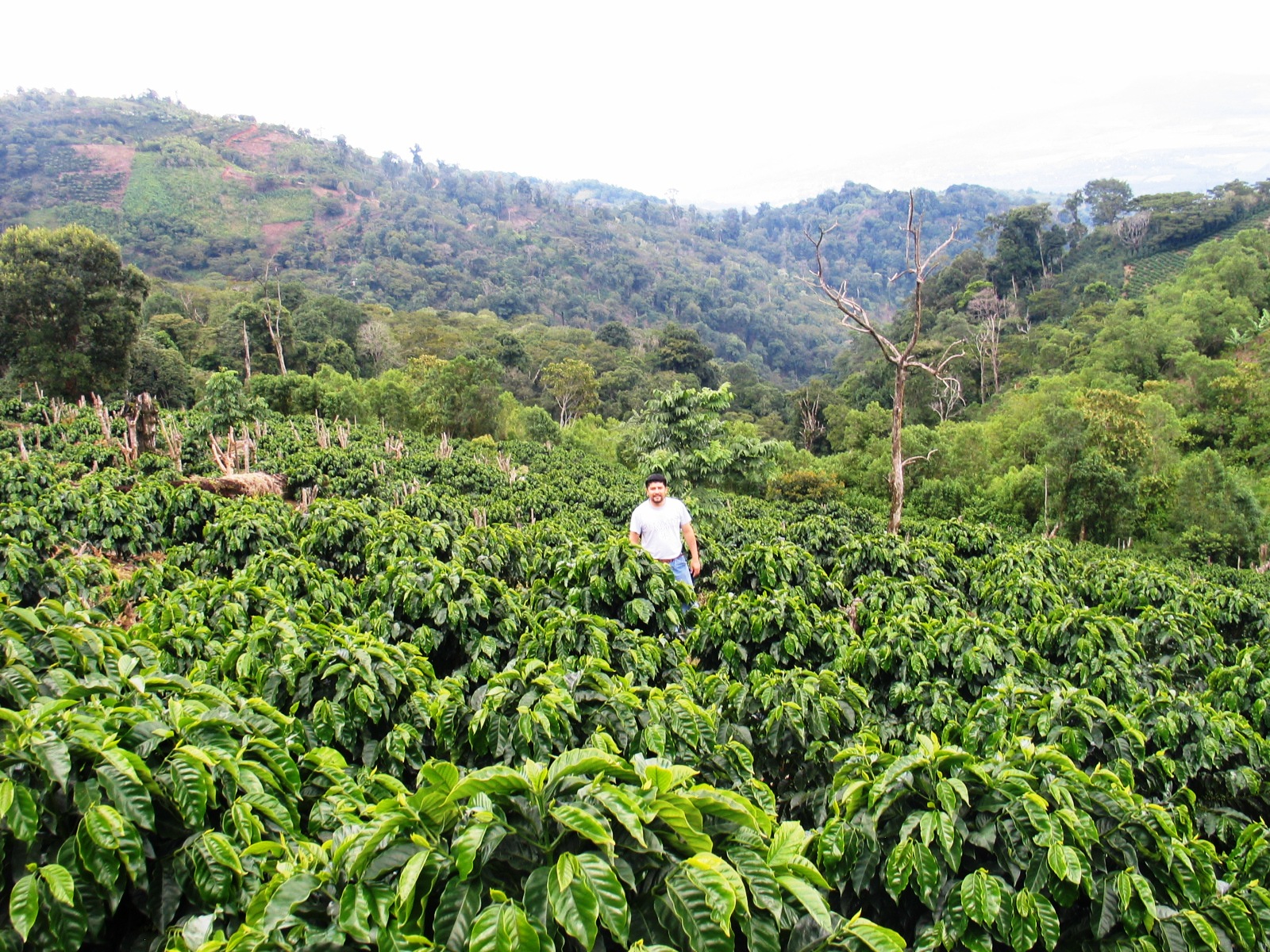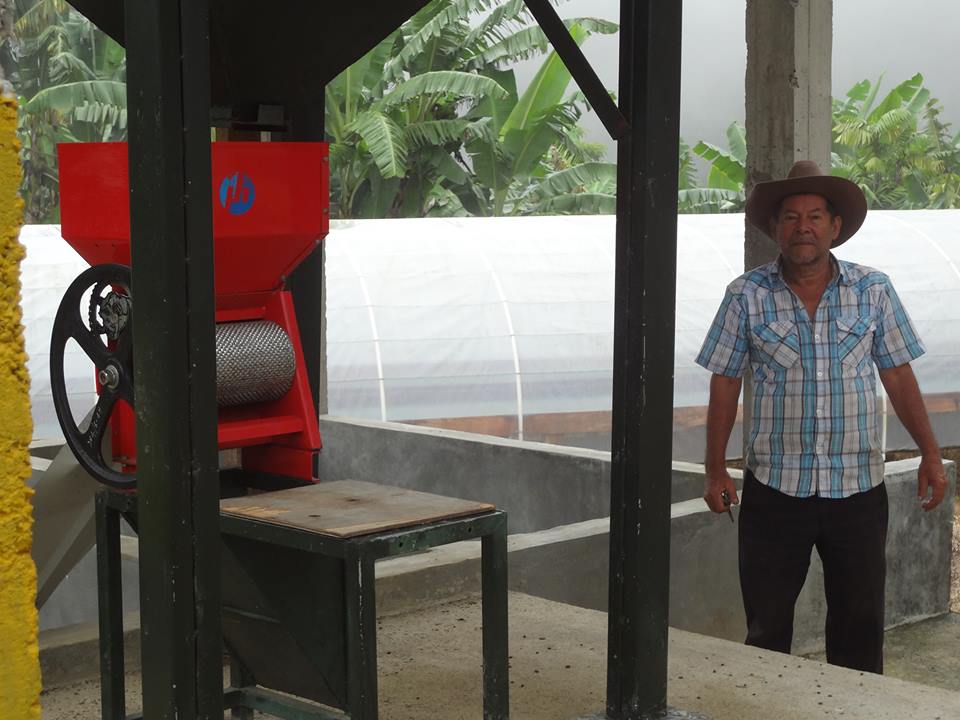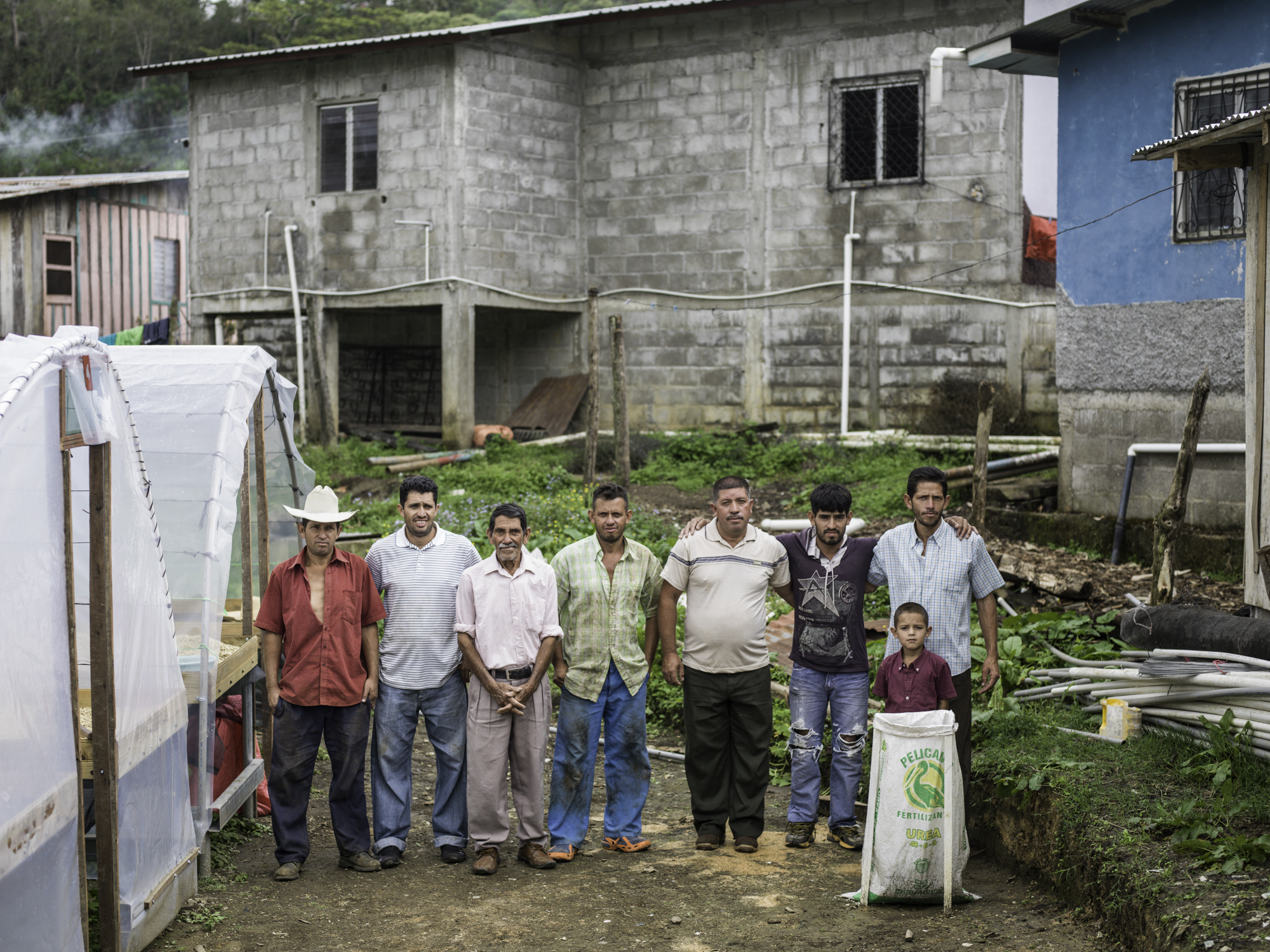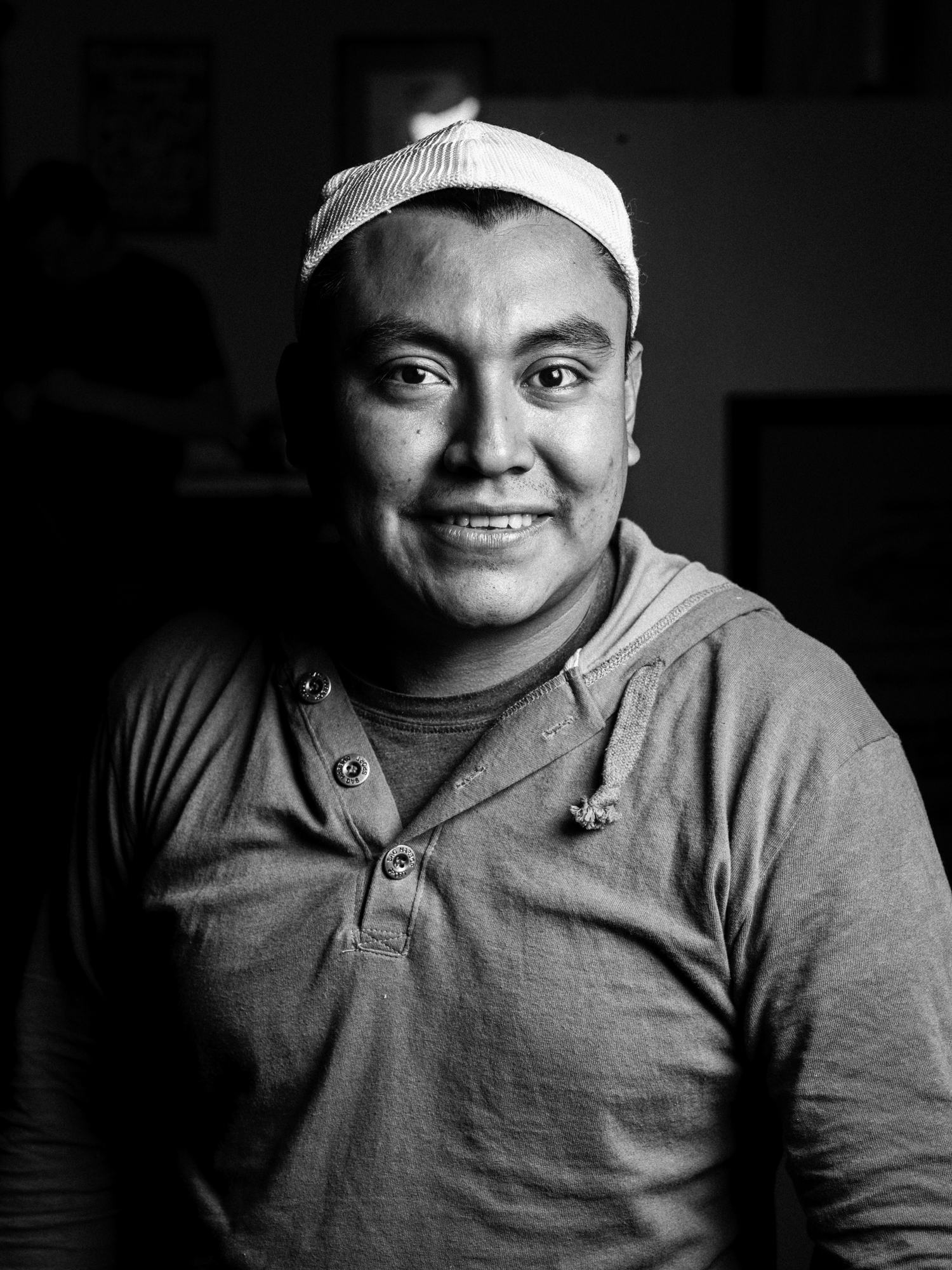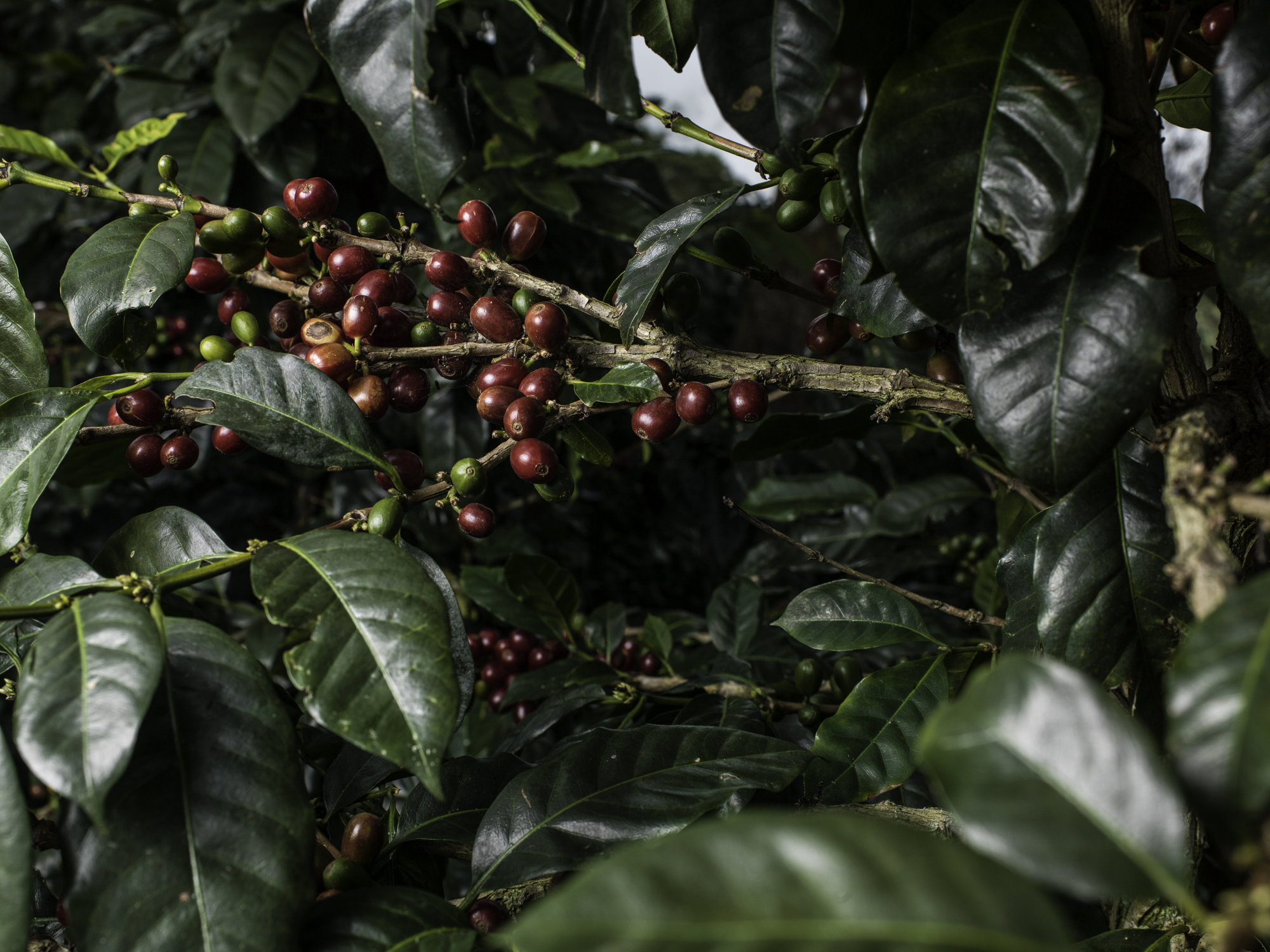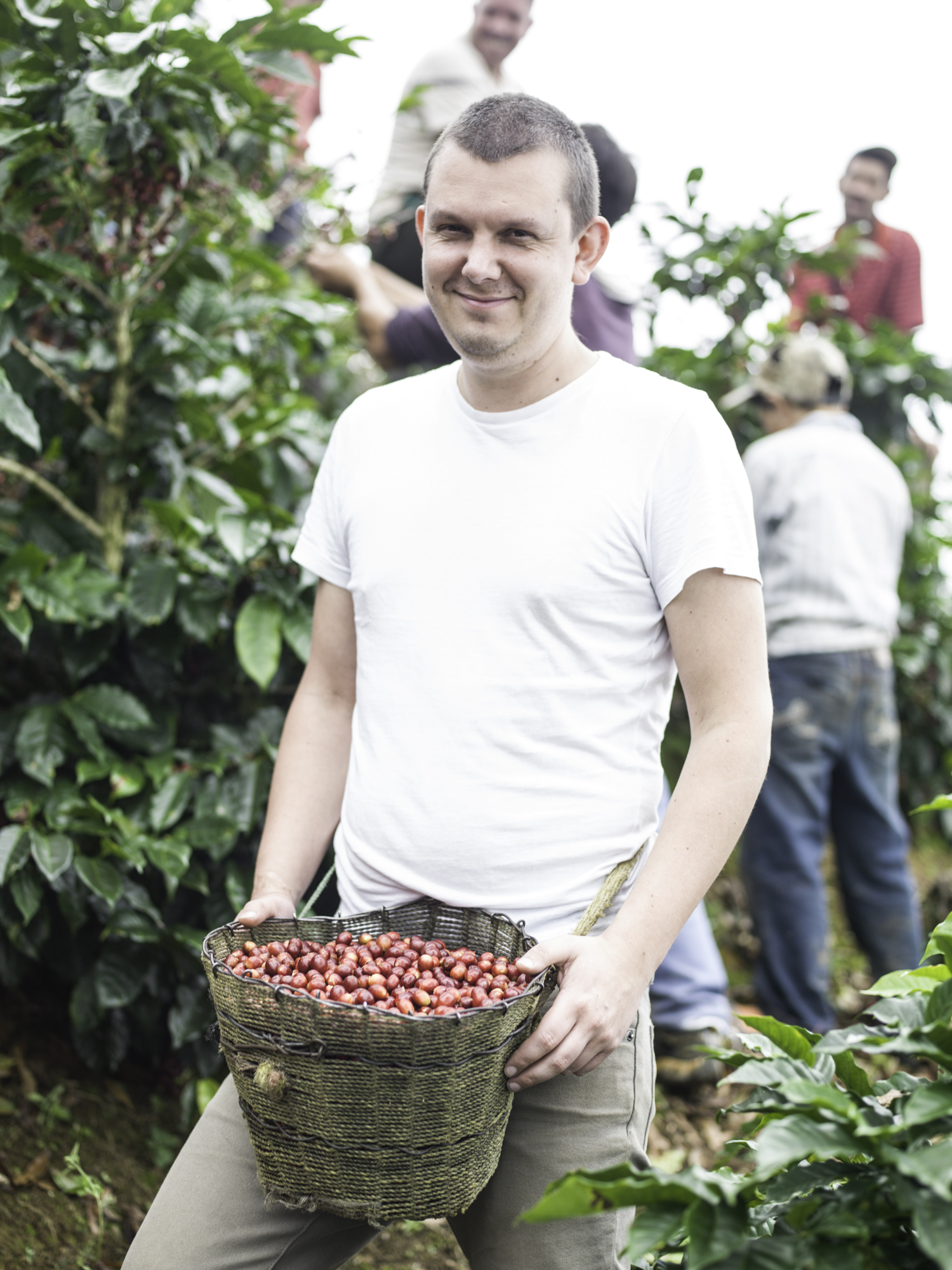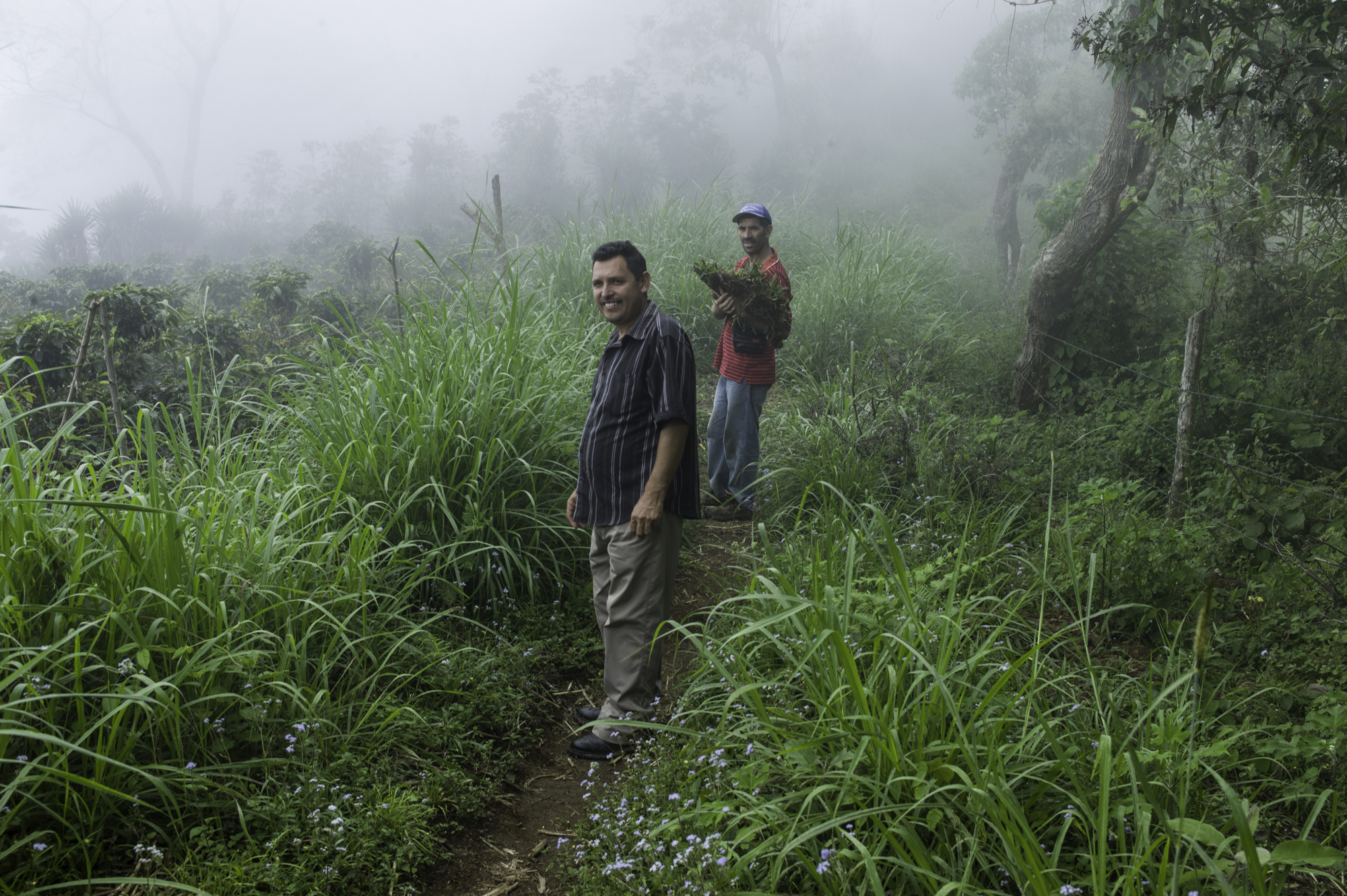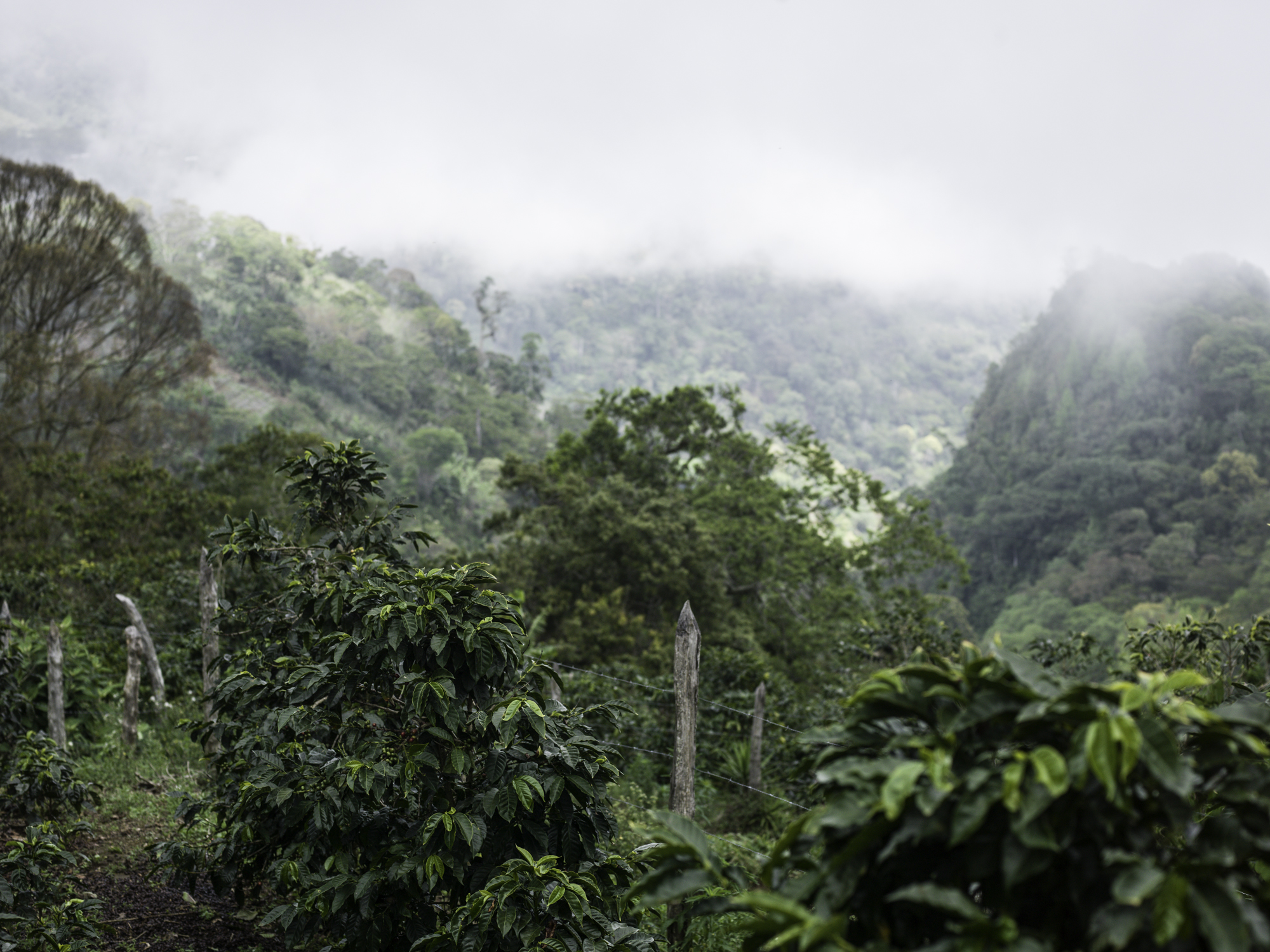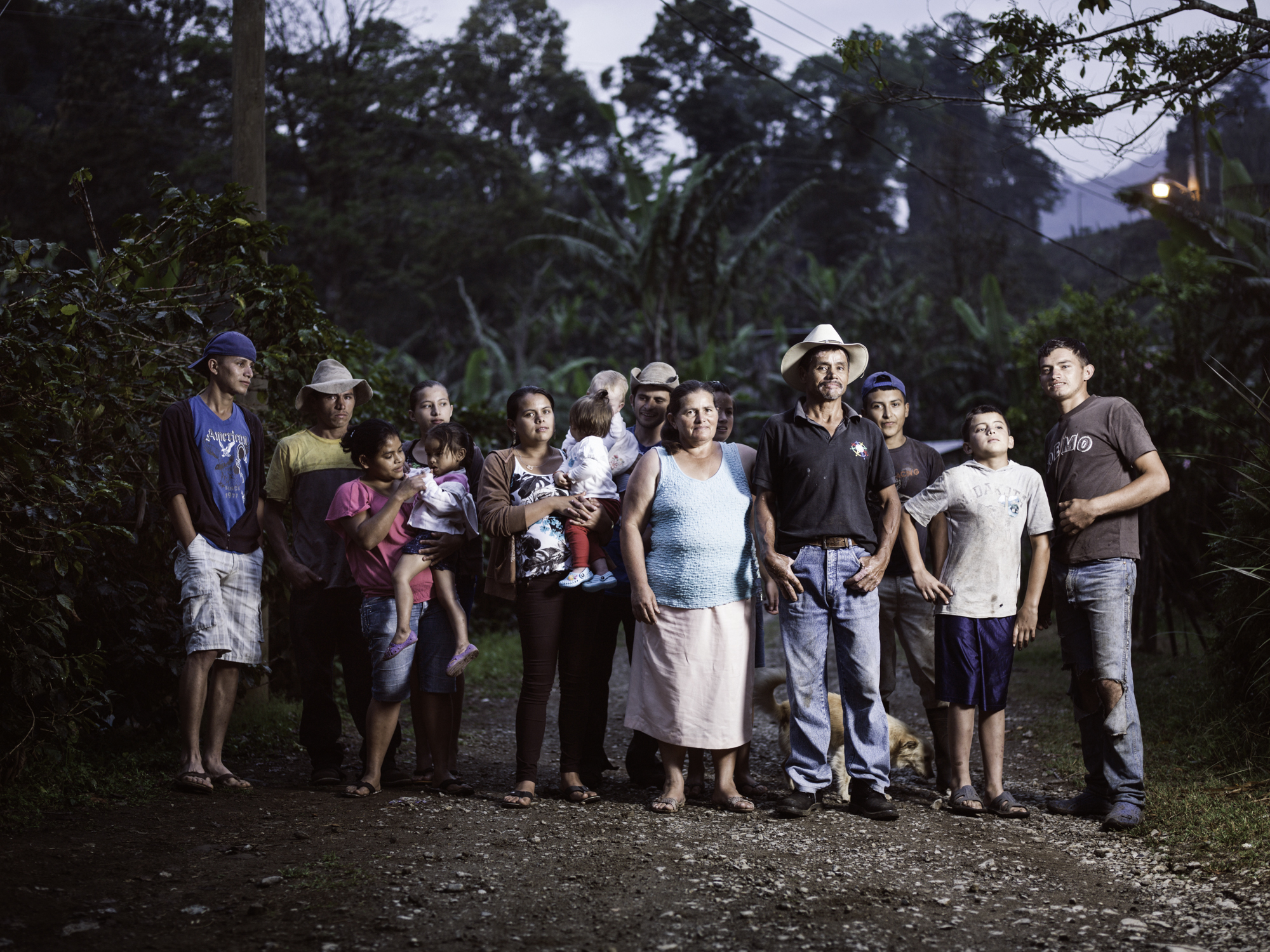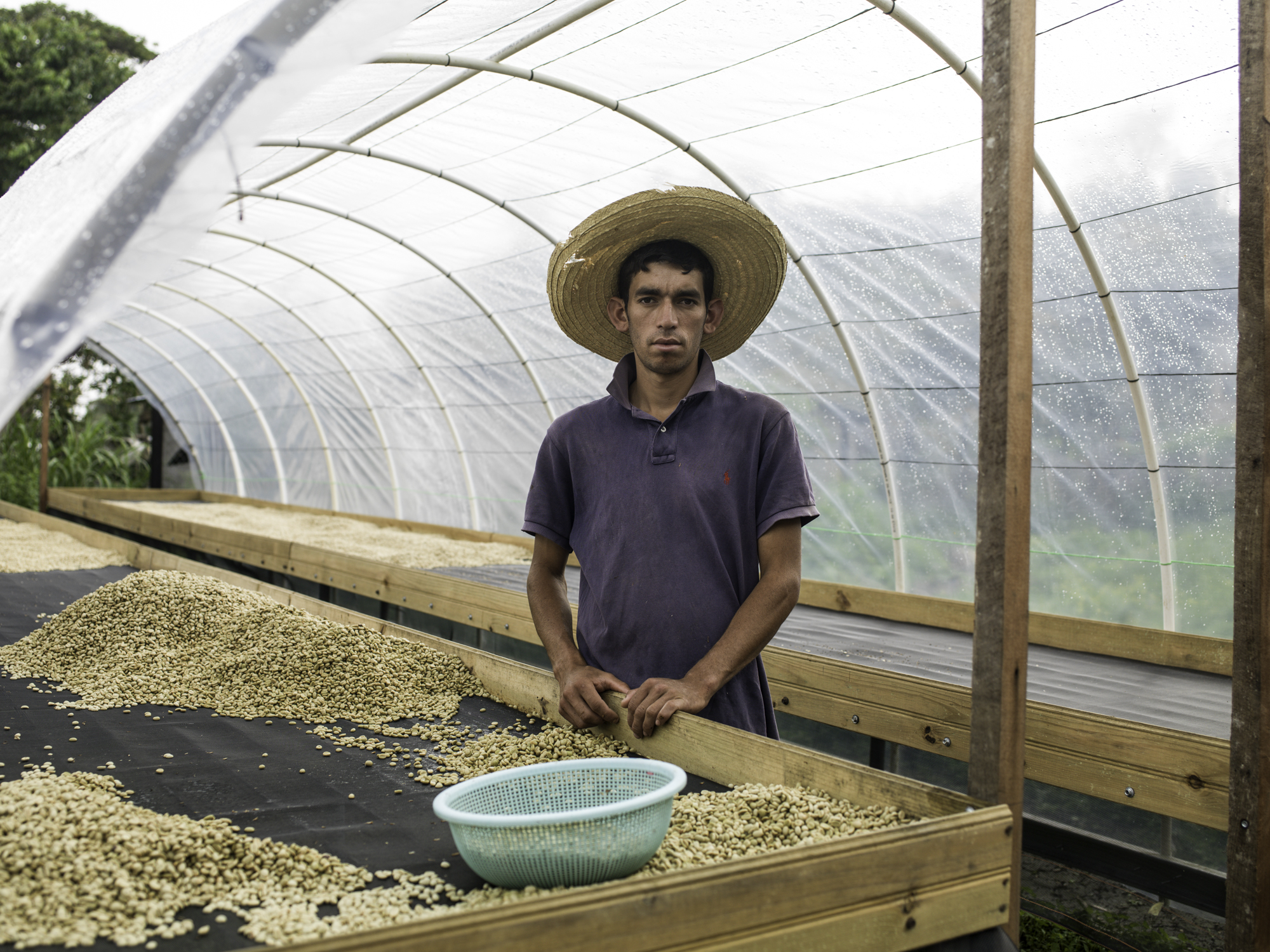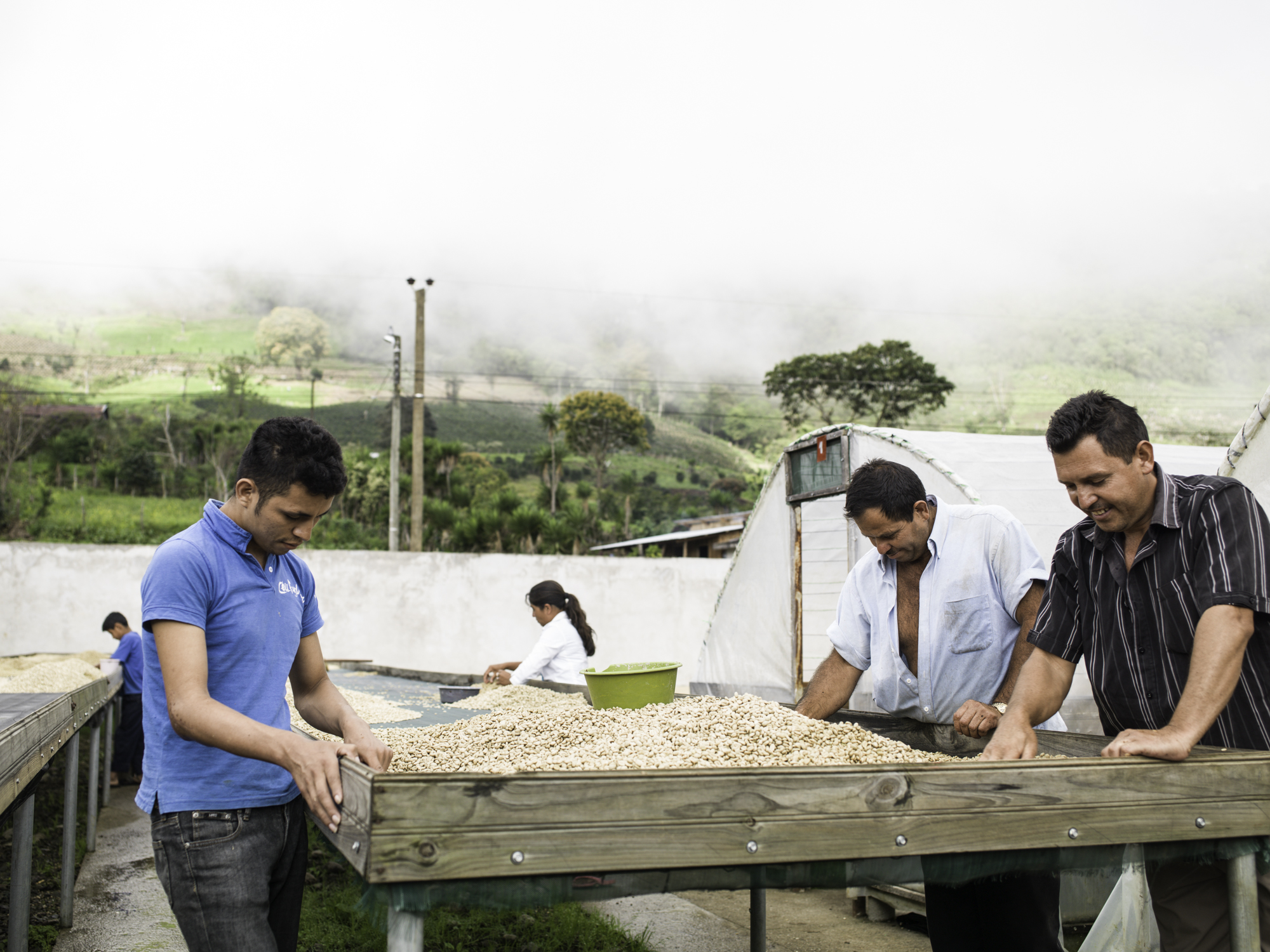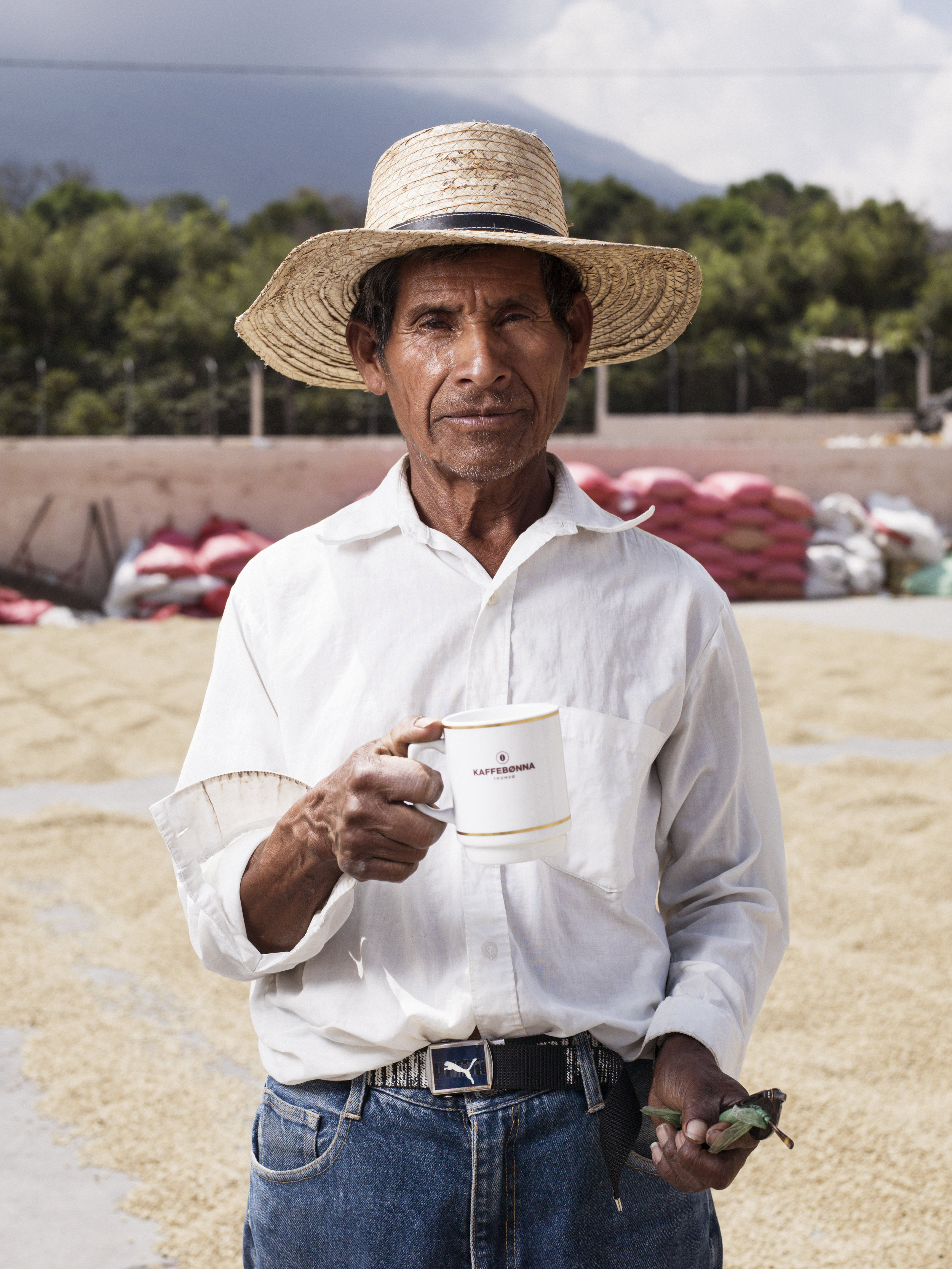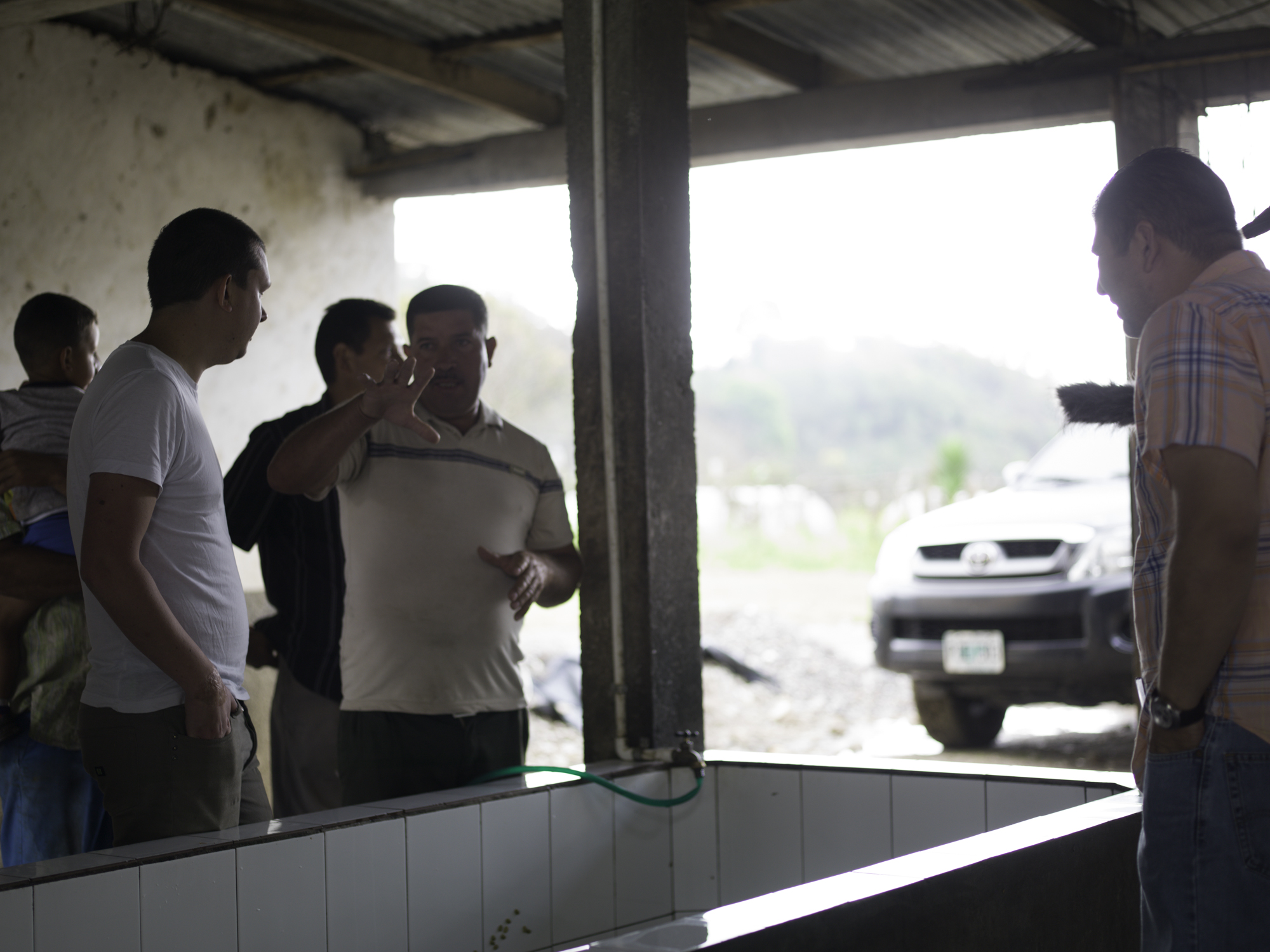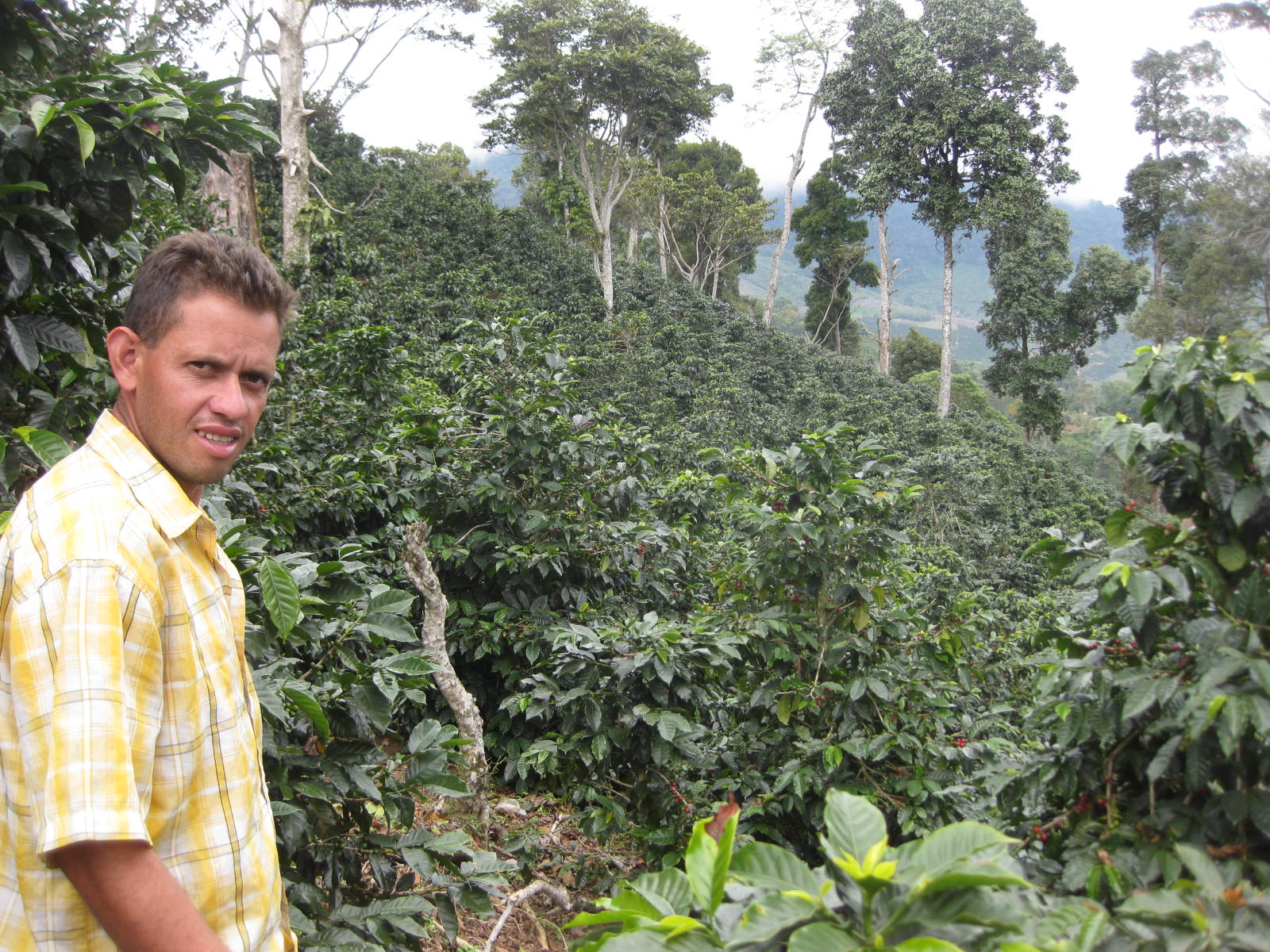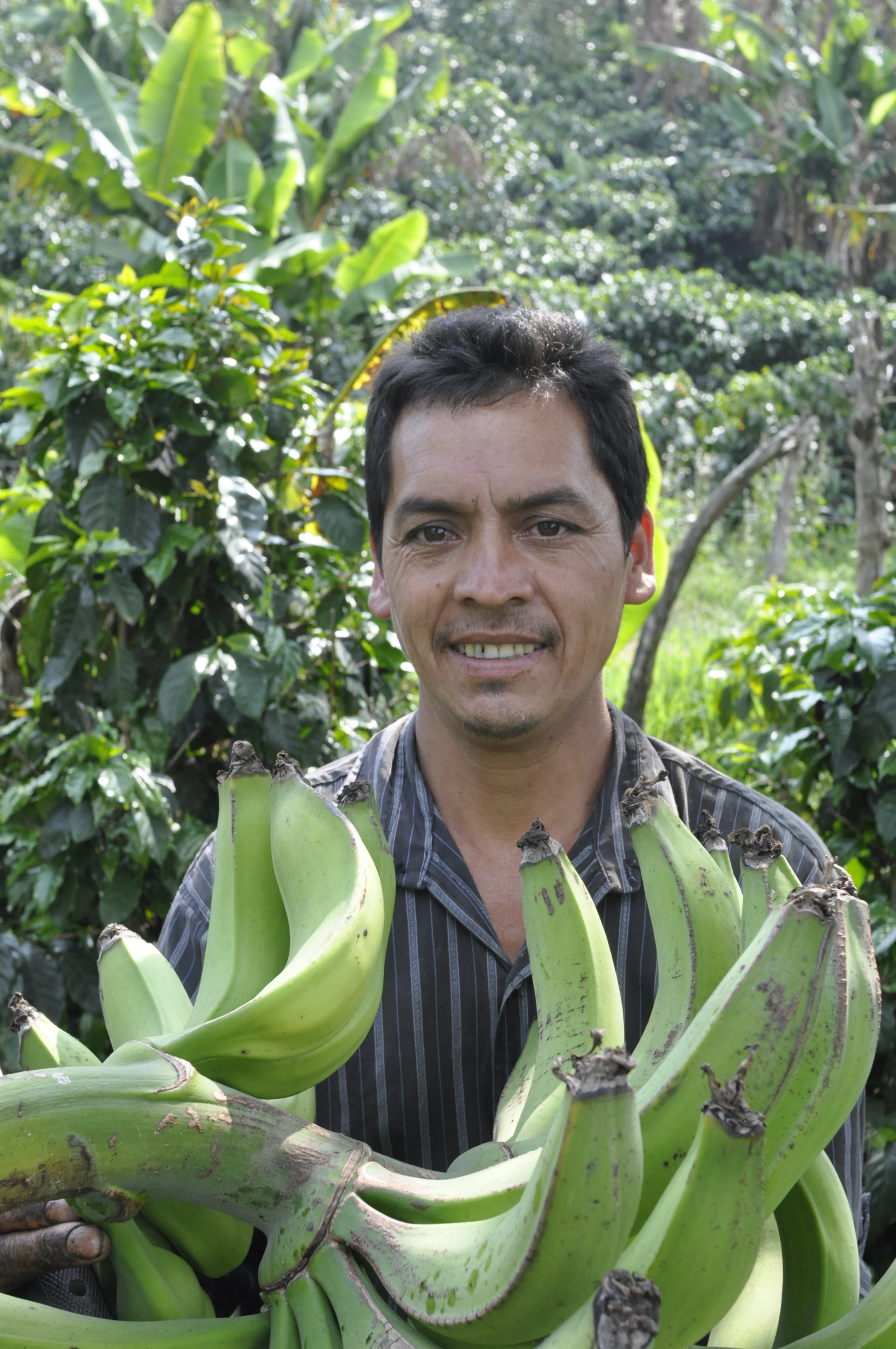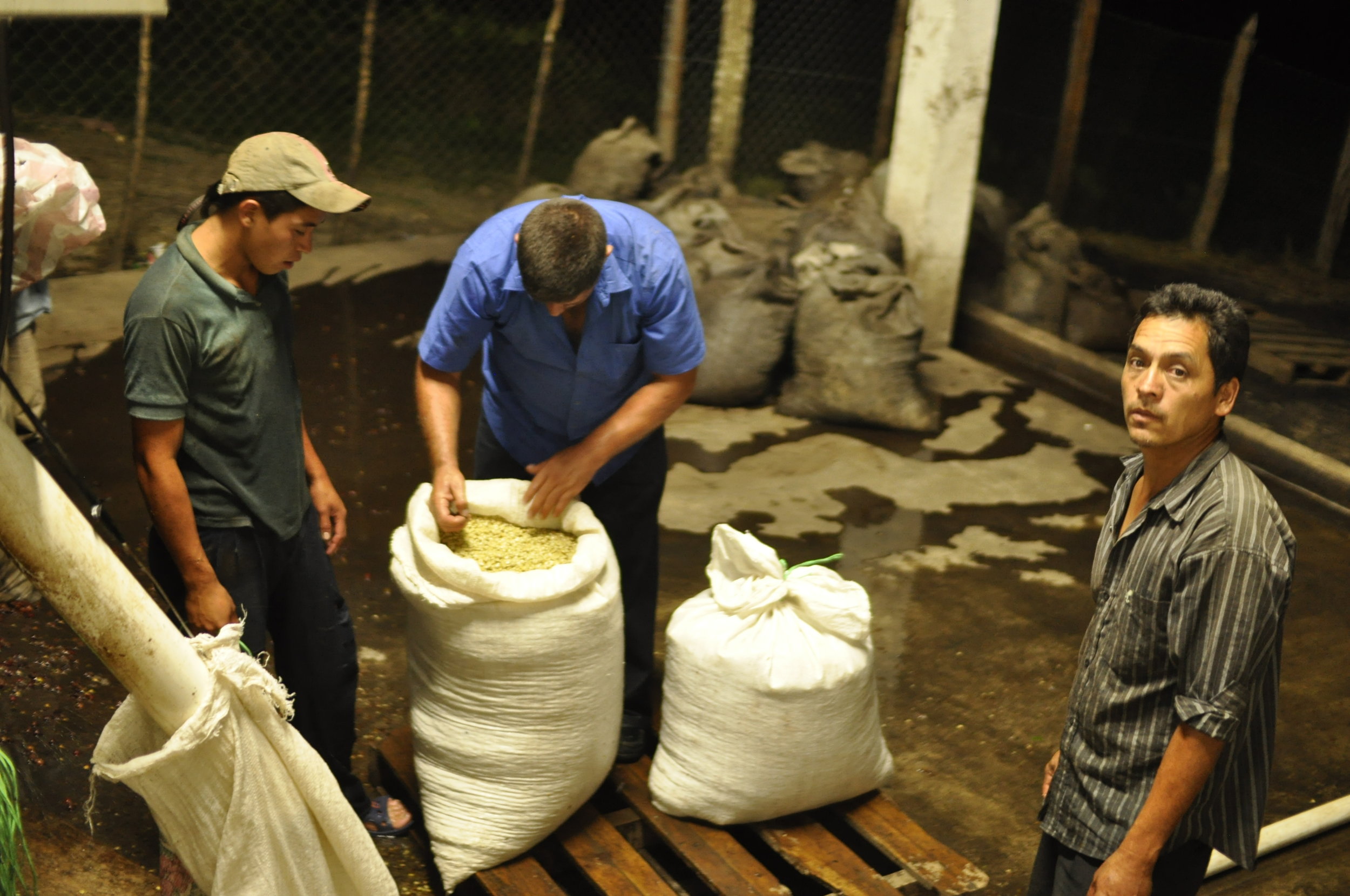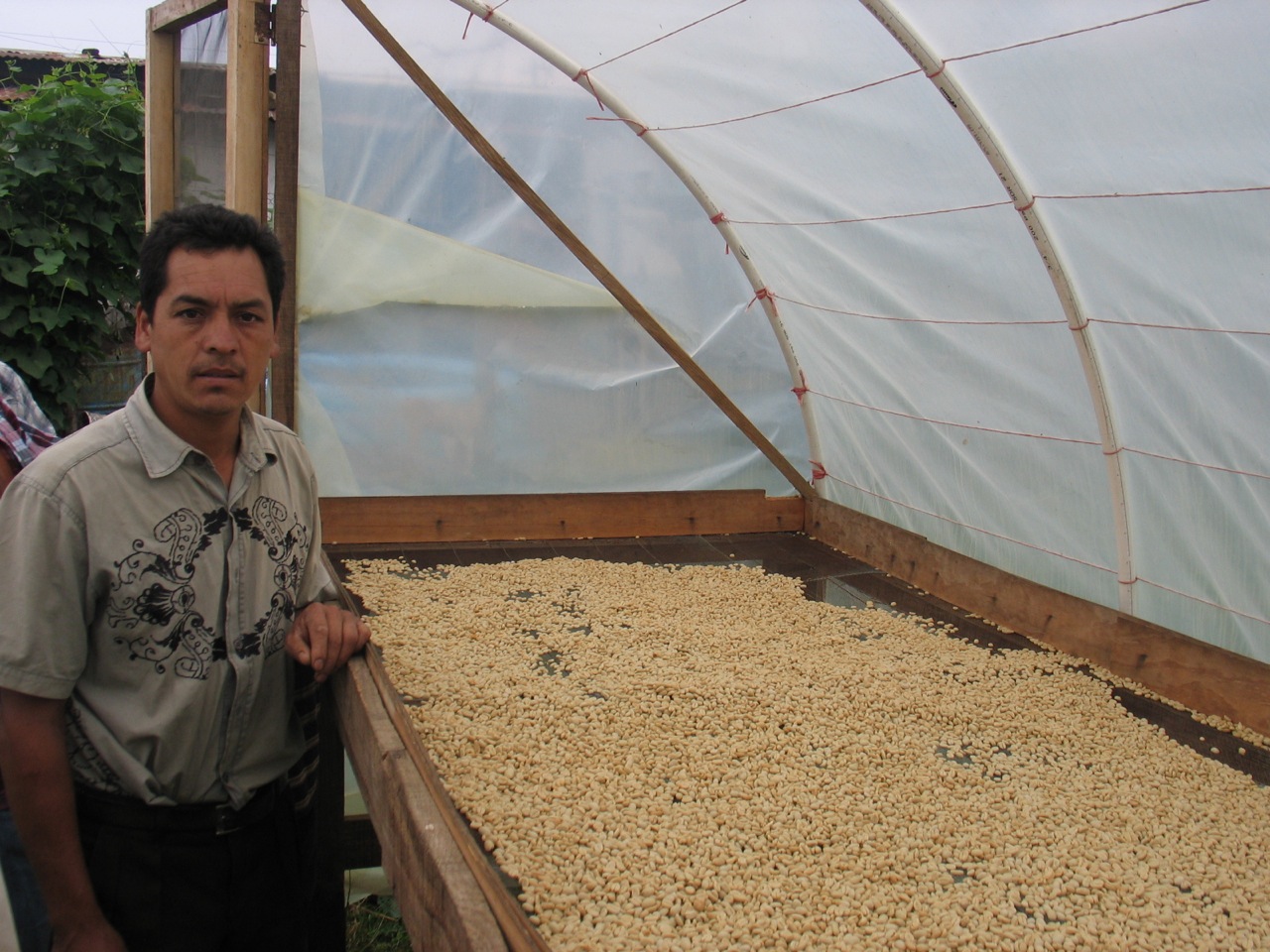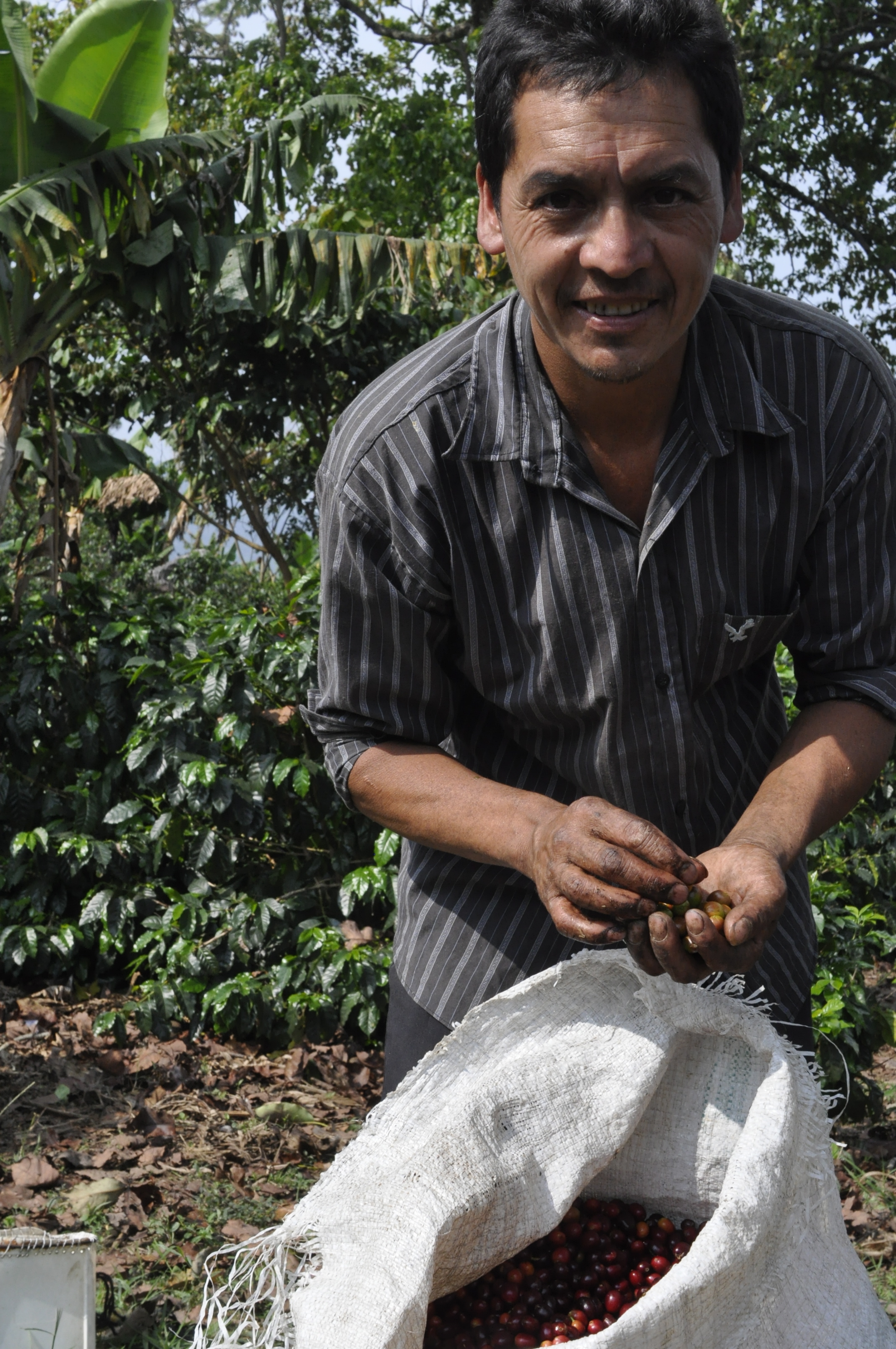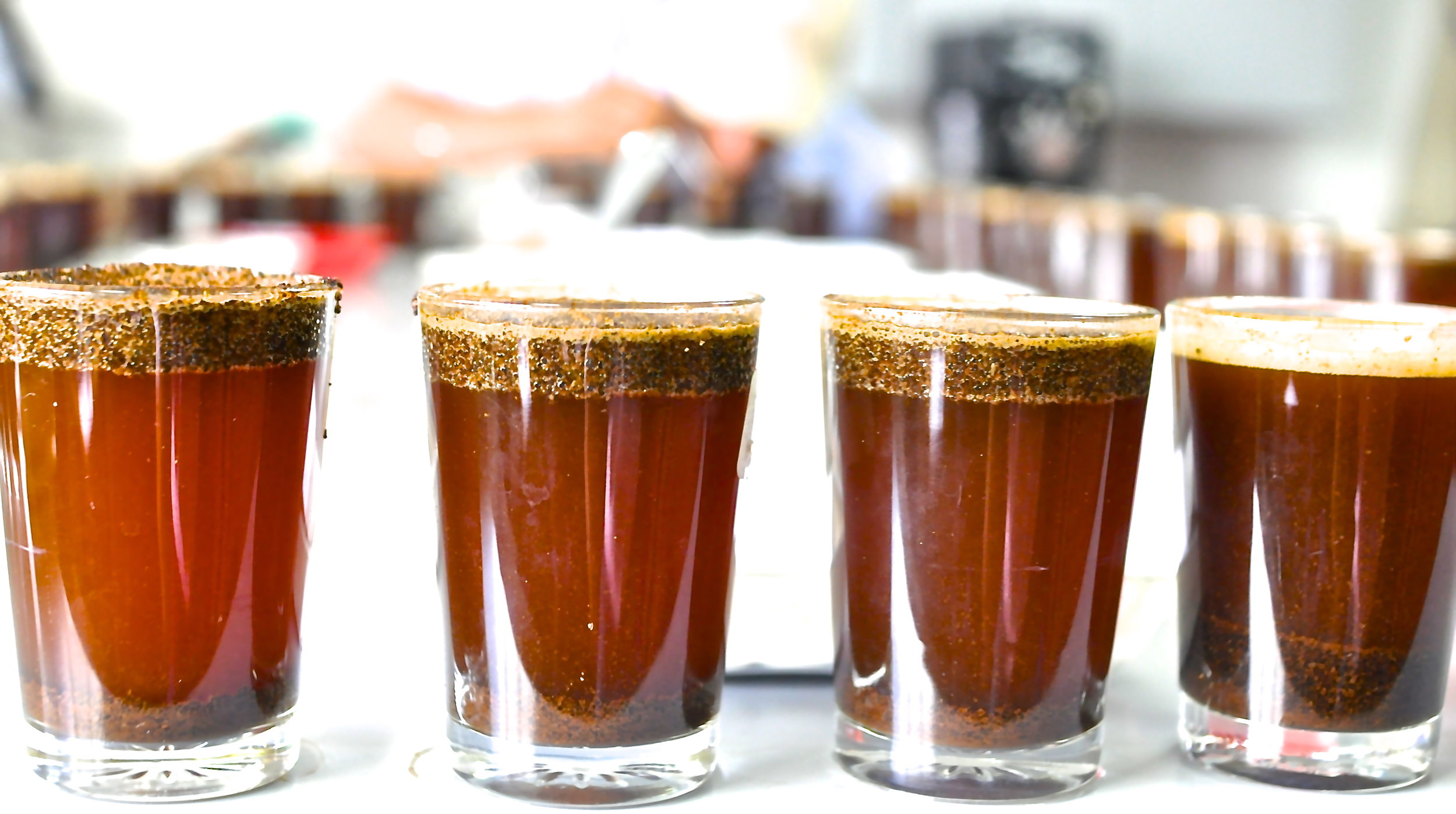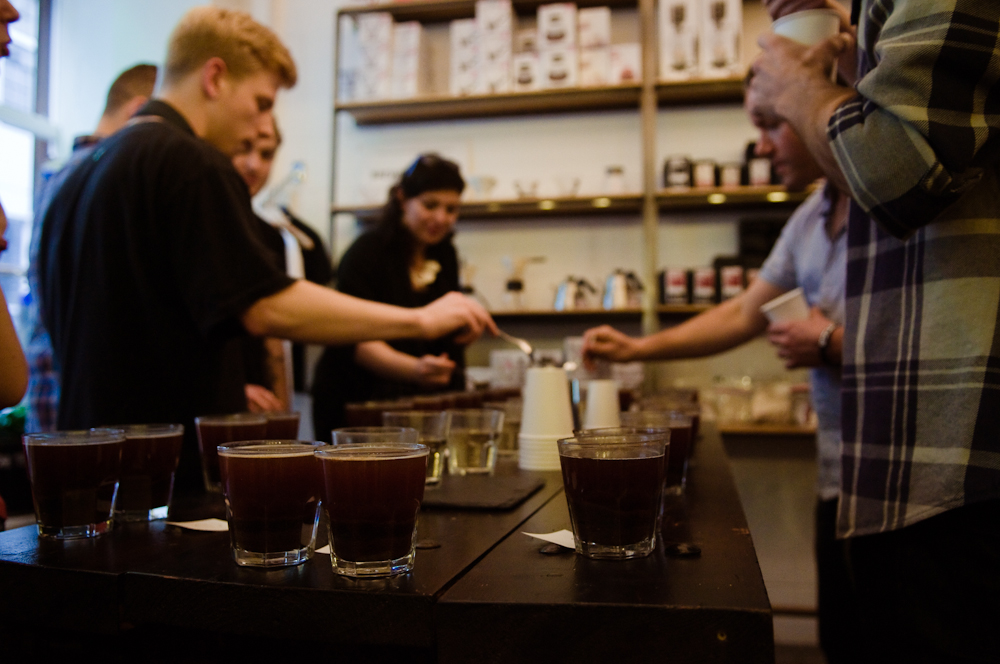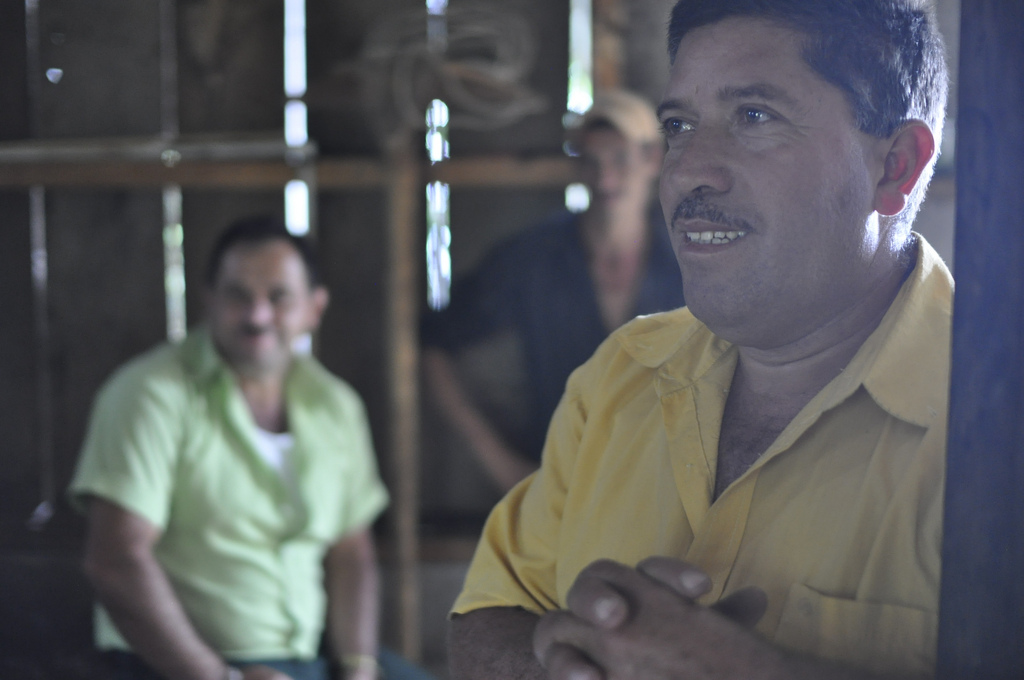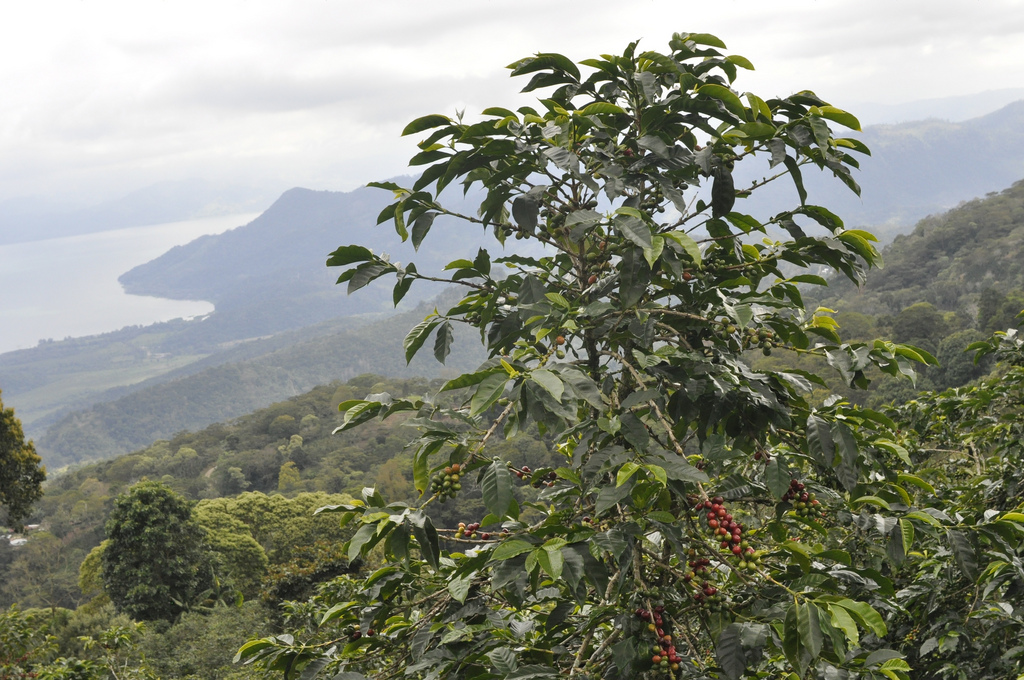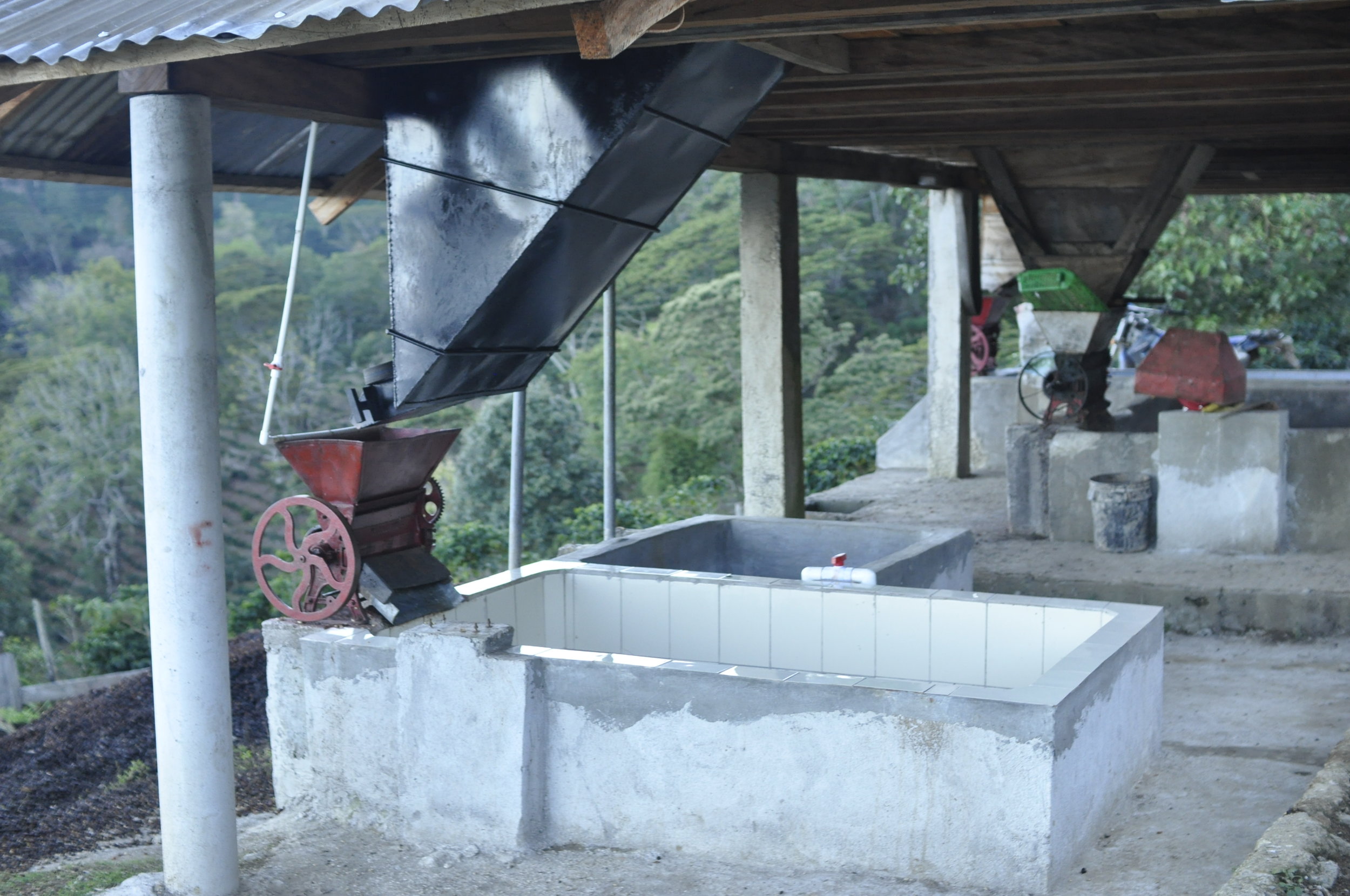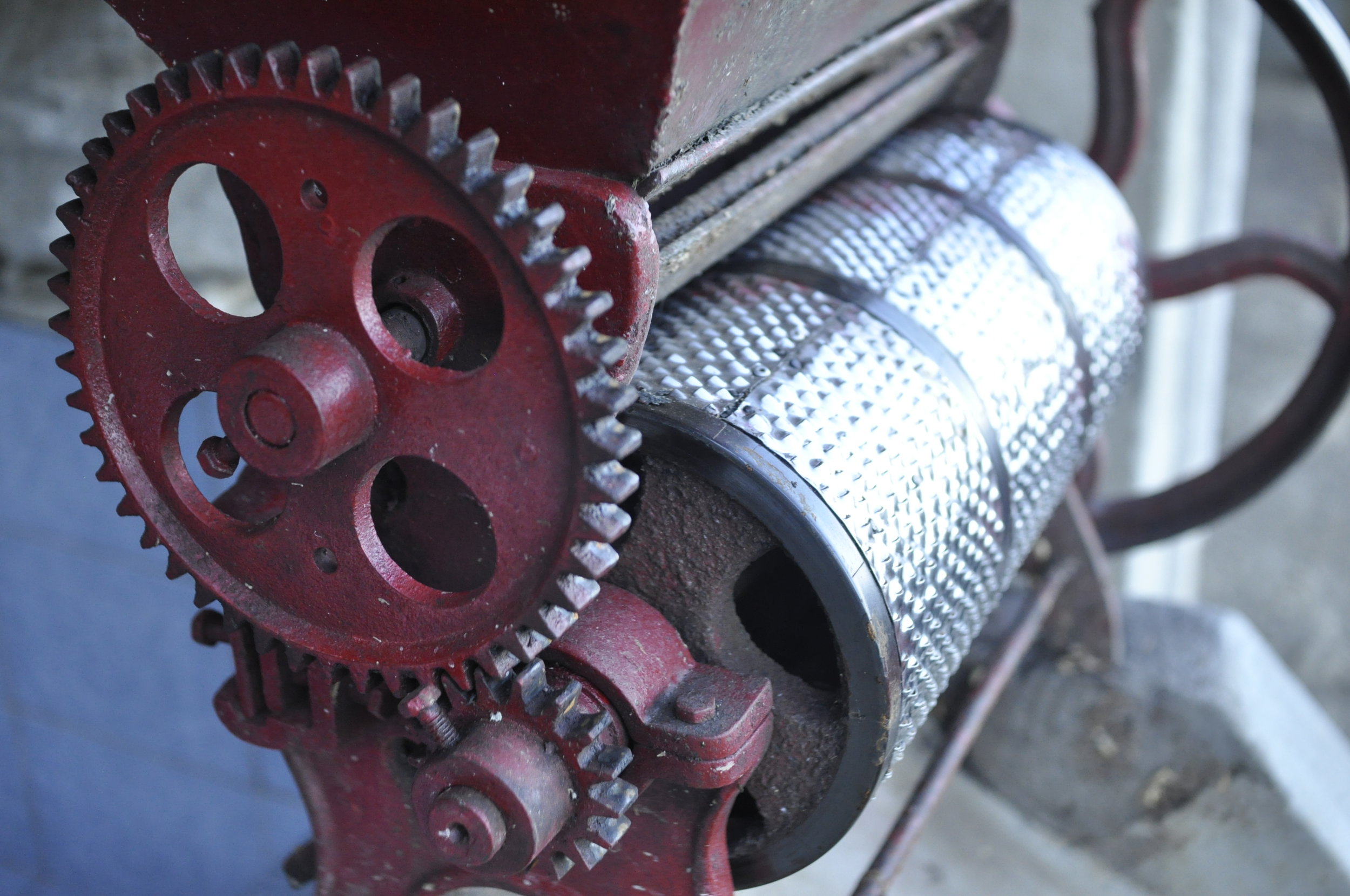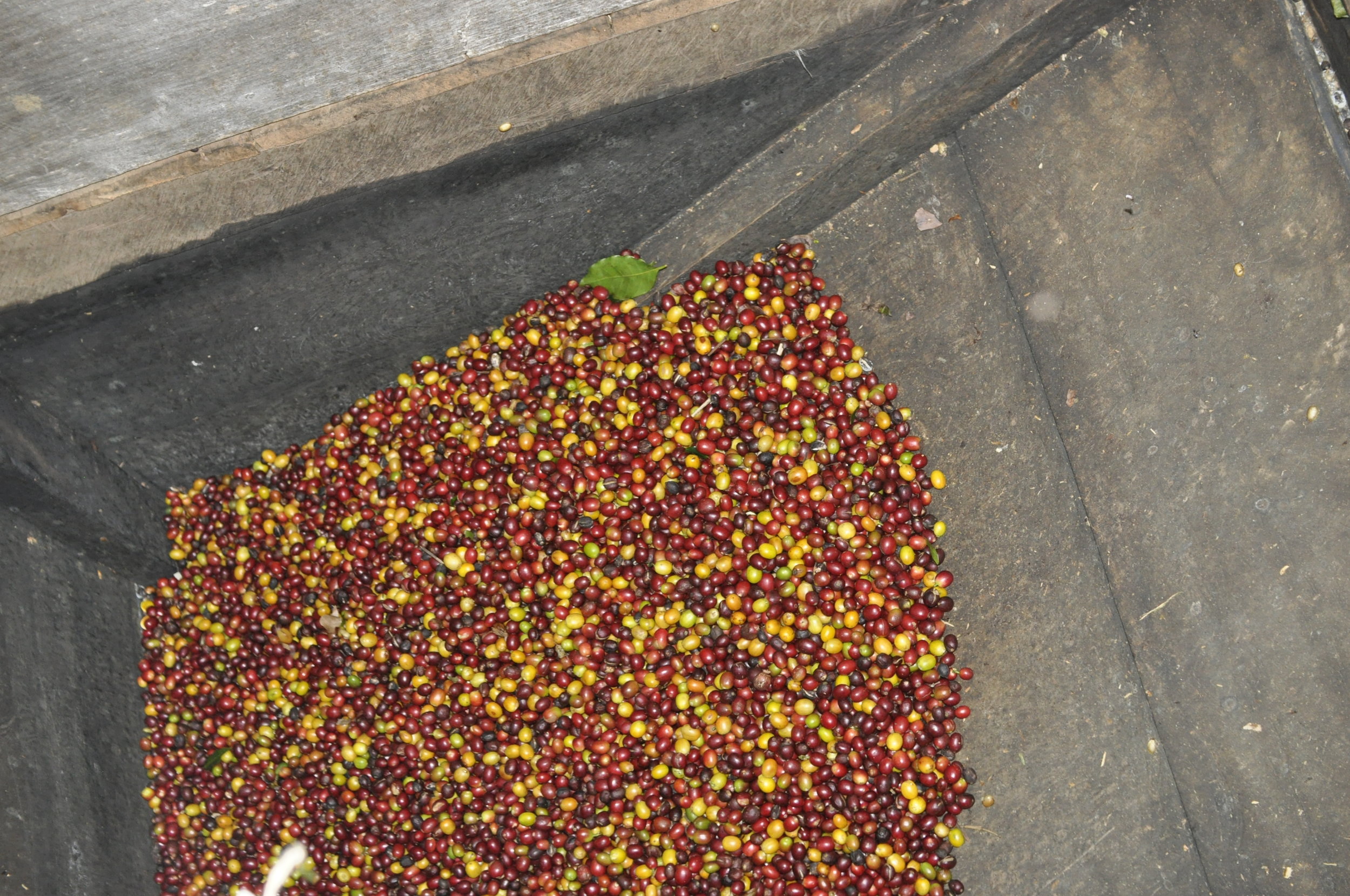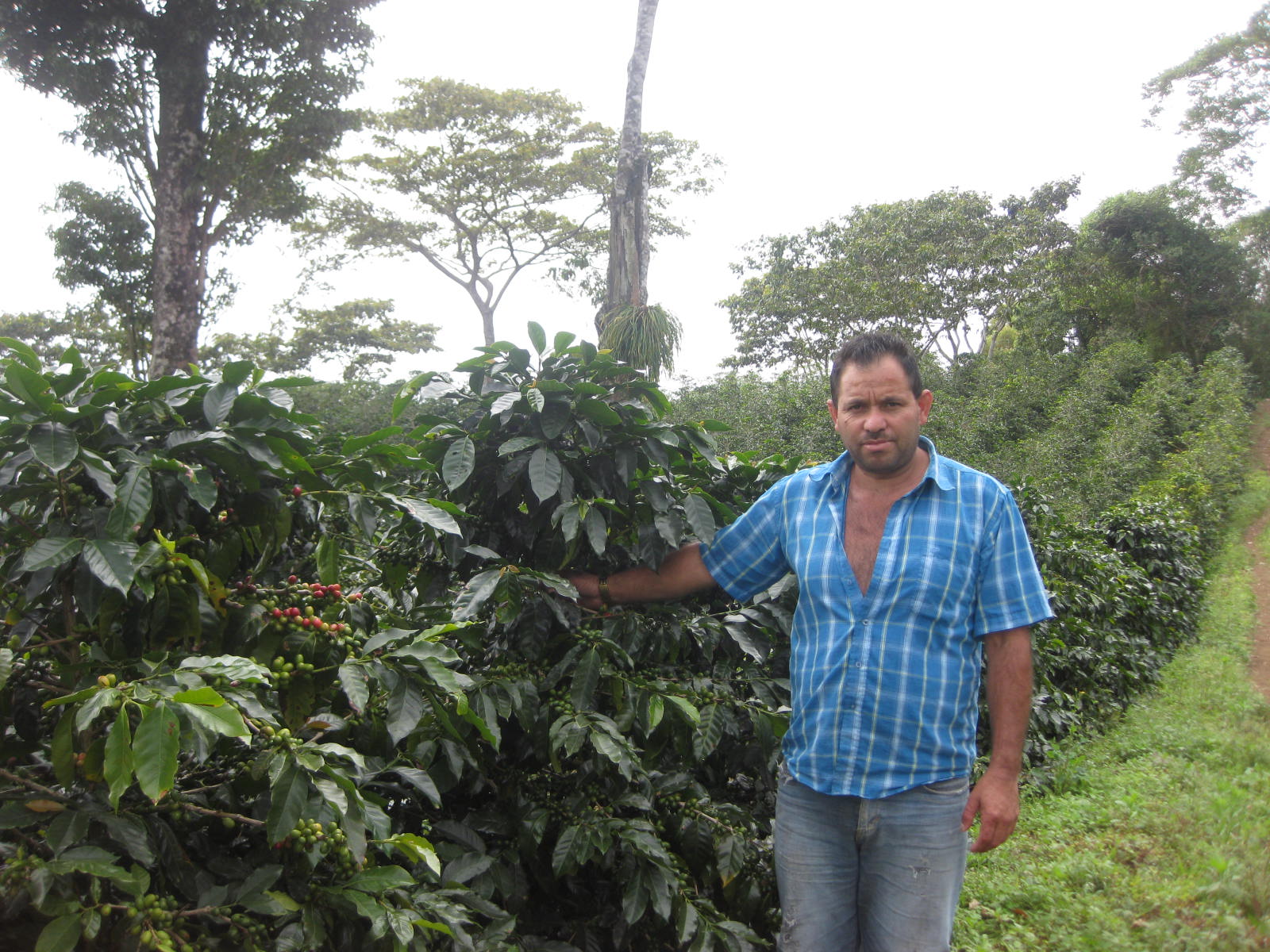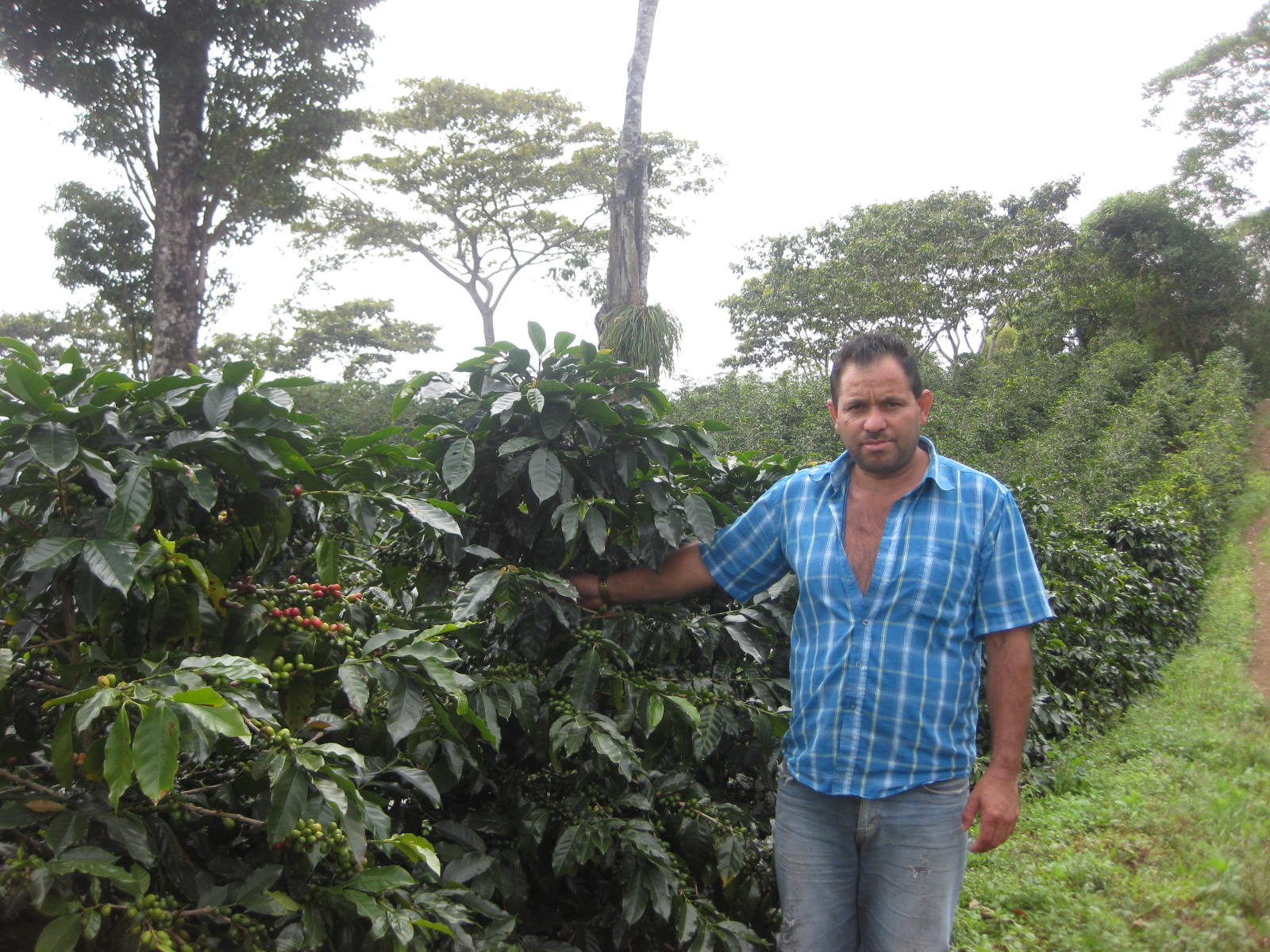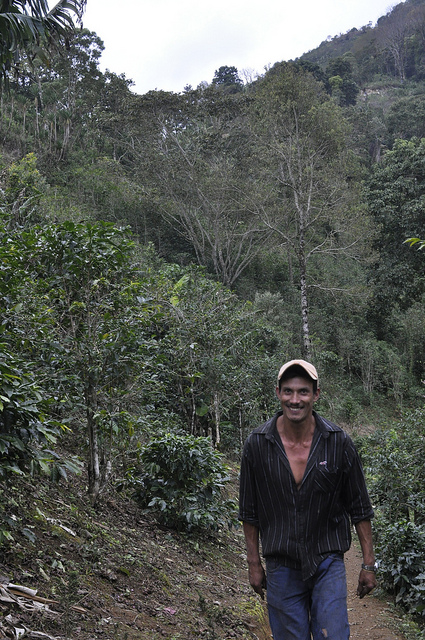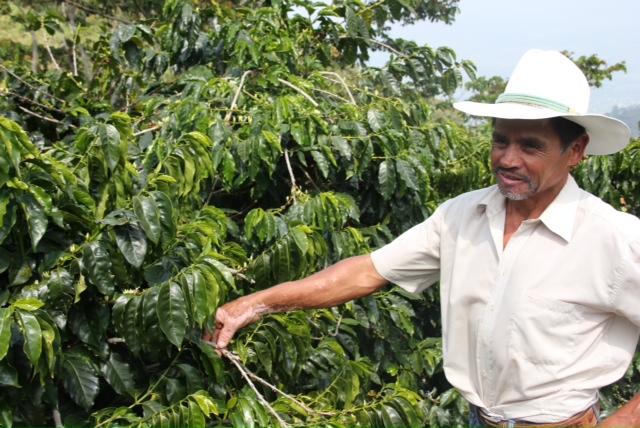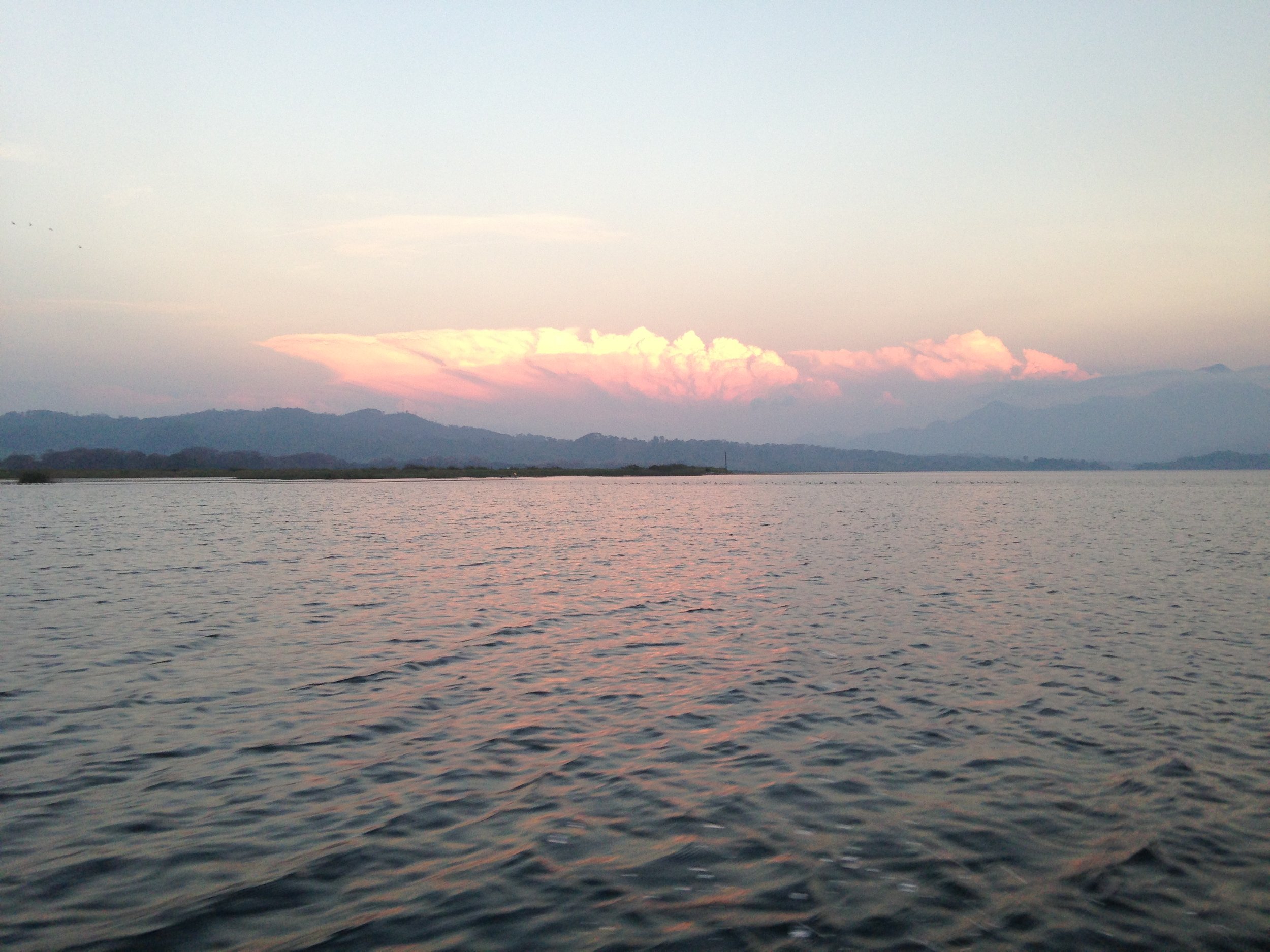 It has been misty, sometimes rainy and quite cold. The sky is white and Yojoa Lake has been hidden under a cottony layer of fog for days. Despite the weather, the place remains just as beautiful. Welcome to Santa Barbara.
It has been misty, sometimes rainy and quite cold. The sky is white and Yojoa Lake has been hidden under a cottony layer of fog for days. Despite the weather, the place remains just as beautiful. Welcome to Santa Barbara.
This is how the weather usually is at this time of year, in the early days of January. However, when the sun and the heat return, when the view of Yojoa is back, it is breathtakingly beautiful in another way. That beauty is reserved for our return in April, the end of the harvest period.
I have spent the last few days visiting farms and meeting with a dozen or more farmers and friends from the villages of Las Flores, Cielito and Cedral – all from the now famous hillside of the Santa Barbara mountain – not far from the town of Peña Blanca. I have also made new acquaintances with farmers from La Paz in the South, close to the Salvadoran border.
The harvest has barely begun; some started picking coffee cherries at the end of December, but most started last week, or will start within the next few days. This means that there is little to cup, but there is always something. We were able to collect enough samples from farmers’ drying beds, storages (sometimes their living rooms) to make for an early preview of what-is-to-come.
The purpose of an early pre-harvest trip like this one is to get an understanding of how the coffee framers experienced last year’s harvest and to hear about what they think of the upcoming one. This is also a good opportunity for us to talk about our expectations, as well as give feedback about our experience with the past crop: its arrival condition and cupping notes.
I must say (and I have made sure to share our gratitude): Last years crop was—generally speaking—the best we have experienced in the 9 years we have been working in this region. In some cases, some lots were the best we have ever experienced from Honduras.
Good and challenging things have happened all at the same time in the past year, but our expectations are nonetheless big and hopeful for the upcoming crop.
[gigya src="http://www.flickr.com/apps/slideshow/show.swf?v=71649" width="700" flashvars="offsite=true&lang=en-us&page_show_url=/photos/100617082@N06/sets/72157640070999133/show/&page_show_back_url=/photos/100617082@N06/sets/72157640070999133/&set_id=72157640070999133&jump_to=" allowFullScreen="true" ]
The much-talked-about-issue: Roya
Upon my return to Santa Barbara this time, I was anxious to hear from the farmers themselves about what has been their biggest challenge in the last year, namely, the Roya fungus attack. Some farms on the hillside are looking hard hit, some look abandoned; it is not a pretty sight! That said, in working with farmers in other similar places (i.e. southern parts of Huila in Colombia) for many years, with climates not unlike the one here, we have learned to have faith in good husbandry. As Alejandro Cadena from Virmax in Colombia explains:
Think of the roya as a cold or flu. It is something that has always been around and will always be there latently. It comes and goes, it sometimes hits hard, sometimes less. The question is always and only going to be: How one is preparing for it.
The weather and other climatic conditions will always make an impact on farming. Plagues may come in cycles and sometimes attack in an epidemic fashion. The huge 2012 harvest that Santa Barbara farms experienced, the year before the 2013 Roya attack, may have made the coffee plants more vulnerable. In other words, there will always be many factors that contribute to the Roya situation.
Roya is manageable. It is not a just question of choosing the right or wrong coffee varietal, not solely. It is also not about bad luck, or about ‘God’s vengeance’. Handling Roya is, for the most part, a matter of farm management. The preferred way is always a proactive approach.
A healthy coffee tree is less susceptible to any disease, really. Good health comes from good nutrition and care: timely application of copper spray (foliage protection agent, often used in organic farming too), timely pruning, shade and wind protection, cleaning of weeds in-between the coffee trees, amongst other things.
Fortunately and not surprisingly, all the farmers we are working with in Santa Barbara have handled Roya well. All the farms I’ve visited look healthy now, but this has not been easy and it has not been cheap. The feedback from all the farmers I’ve spoken to and interviewed about this topic say the same thing: They were taken by surprise but acted upon Roya swiftly. Although many were hit, most managed to take action in time by applying copper spray, even if trees were affected. Affected trees have now either been pruned or taken out altogether. The farms look healthy again; their farmers, happy.
This may all sound easy, but it isn’t. I certainly don’t mean to oversimplify the issue. To be able to handle an unexpected attack like the one we saw last year, one must be present, proactive, and have means readily at hand, particularly financial ones. Some farmers may not have had the experience to foresee what was coming, or weren’t working closely enough with their farm to see it (literally). In these cases, one must be able to trust that the farm’s managers are on top of things.
Even if prepared, there is the matter of access to resources, or lack thereof. Fertilizers and protective sprays come with huge costs: both the products themselves as well as the cost of applying them. In today’s market, with low prices for the coffee itself, it is quite common to hold back on these ‘investments’. The irony is that without investing in the farm, one is even worse off next time around: A vicious circle. All the farmers we are working with in Santa Barbara are saying the same thing: Thanks to the (high) prices paid for their coffees last year they have been able to take better care of their farms, spend more resources on all necessary tasks and are better off than their neighbors that are not selling their coffee in the specialty market. They say that despite last year’s strong efforts in keeping up with the challenges, they are again prepared and well-fit for a new harvest season.
The Collaborative Coffee Source is committed to paying a price for coffee from the upcoming harvest (86pts and up) that currently represents three times today’s market value for ‘commodity’ coffee in the region.
As a matter of fact, all the farmers we are working with (a dozen plus) are expanding. In addition to maintaining their current farms by pruning, making the trees more productive, as well as replanting, they are also buying more farmland and planting new coffee trees. Many farms were on the verge of being abandoned less than a decade ago; today there is eager expansion and strong will to take part in the specialty coffee sector. The days ahead look bright.
Premises for the 2014 Crop Quality
‘Specialty coffee’ is about positive concrete attributes that we find ‘in the cup’, yes indeed. In an ideal world that is the outcome from a set of good natural conditions plus a set of actions made by the farmer: Specialty coffee is man made, it is coming from a set of conscious choices and honest ‘craftsmanship’.
But before all else I like to think of specialty coffee as a ‘mindset’ or ‘ambition’ if you will, with which one is able to do all the extra work that it takes to make it. The Devil is in the Details.
When last years crop tasted particularly good, it had to do with a series of little details that were coming together and making for a clear difference from earlier years. This is how we see the premises are laid out for getting even greater coffee quality from Santa Barbara’s 2014 Crop.
Picking
Many years of prayers and preaching the lesson are paying off. The previous culture of accepting unripe cherries and uneven picking is diminishing. I believe this is the result of a combination of factors. Firstly, the fact that the farmers see us as a sustainable and long-term partner makes for trust in the fact that we want to buy their coffee again and again. A fling is one thing; we’ve been around since 2005. But our clear message of the importance of ripe picking, doesn’t really sink in until farmers themselves take part in cupping sessions. Now they do.
Picking coffee is one of the most labor intensive, hence one of the most costly processes in making the coffee we want to buy. To get these results the farmers we work with are paying a minimum of 50-75% premium for the work of picking cherries to their workers. Additionally, they seem to have succeeded in implementing a stricter regime at the reception of cherries before milling. All cherries that are not fully ripened must now be removed from the batch before they can go into the de-pulping process. This has become common practice amongst our partners.
Processing
Even if the coffee parchment looks perfect in terms of no-cracks, etc., I have, at times, noticed slight unevenness in the color. Not a lot, but enough to want to bring it up.
Generally, I think the traditional washing technique in the region can be improved. At least the outcome after the fermentation and washing can be cleaner and more consistent. Most farms have a small de-pulping machine and an open fermentation tank, meaning they can wash the coffee either manually in the same tank, or (better) in a separate (often small) washing channel.
I have suggested a new trial project that may lead to even more clarity in cup profile. Farmers who have agreed will now try to soak the already washed coffee in a separate tank with new clean water before putting it out for drying. Washing is often done in the afternoon, thus if the coffee is put back into a ‘soaking tank’ it will get another 12-18 hours of water contact, plus the obvious benefit of extra mucilage removal.
This is common practice in East African countries, making for the cleanest, most complex, sweet and acidic coffees in the world; it will not hurt to try it in Santa Barbara. We’ve asked for trials and will buy the coffee regardless of the outcome, thus the involved farmers are at no risk.
Drying
Generally, the drying process is the most unknown territory in coffee processing, thus it is the most interesting one to study. Until recently, few farmers had their own drying beds. Now it is mandatory if one wants to be in the specialty coffee game.
In previous years, farmers in Santa Barbara used to de-pulp, ferment and wash the coffee at their farms, then brought the wet coffee in parchment down to a common place for patio drying, run by San Vicente. This meant that another party was taking over the task of processing, hence making the coffee.
The biggest change responsible for elevating the quality of coffee processing in the Santa Barbara region in recent years has been the new drying regime that is now taking place at many farms. Sun drying on beds is, depending on climatic conditions, either done under parabolic translucent cover (for rain protection) or under perforated mesh (for shade), and includes continuous hand raking and picking out of visible defects. This process is gentler than past drying techniques and is probably providing for a better result in the cup. It allows for a better view of the process, and a more hands-on approach.
Most good things come with a cost: When farmers are more involved in making their finished product it is more labor intensive and costly for them, but it provides for the chance to get a better price for their product. This is both empowering, as well as makes one more responsible for the outcome.
The Moreno family has been the role model in the Santa Barbara community this regard, which is probably why they have made the most consistent quality for ten years running. Yet, as of last year, ALL our relationship-farms have committed to this new regime.
Post drying
The handling of coffee post processing and drying is important for maintaining its quality. Our concern goes beyond the fresh flavors from the cupping table at origin. We experienced that the coffees we got from Santa Barbara last year kept well throughout the months of roasting. As a matter of fact, the few bags that are still in roasting production around the world are still cupping impressively well.
Packing the coffee with Grain-Pro bag liners for export has in recent years become common practice internationally. Anything less is now unheard of. Last year our partner at this origin, San Vicente Coffee Exporters, implemented a simple yet important approach in how to store coffee before export and before dry milling: While the coffee is resting, usually for a few weeks, sometimes for a couple of months (waiting for all farm lots to be harvested and collected) the coffee is always kept in its parchment before milling. Usually parchment coffee is kept in woven polyurethane bags. As of last year San Vicente started storing the parchment coffee with an additional Grain- Pro liner. This seems to have stabilized and maintained moisture levels better. The decreased fluctuation of moisture content and resulting decreased impact from ambient moisture levels, has seemingly made for a more stable resting process. Let’s say: a more restful rest. The result is an altogether fresher coffee before departure and upon arrival; a better maintained coffee all the way.


















